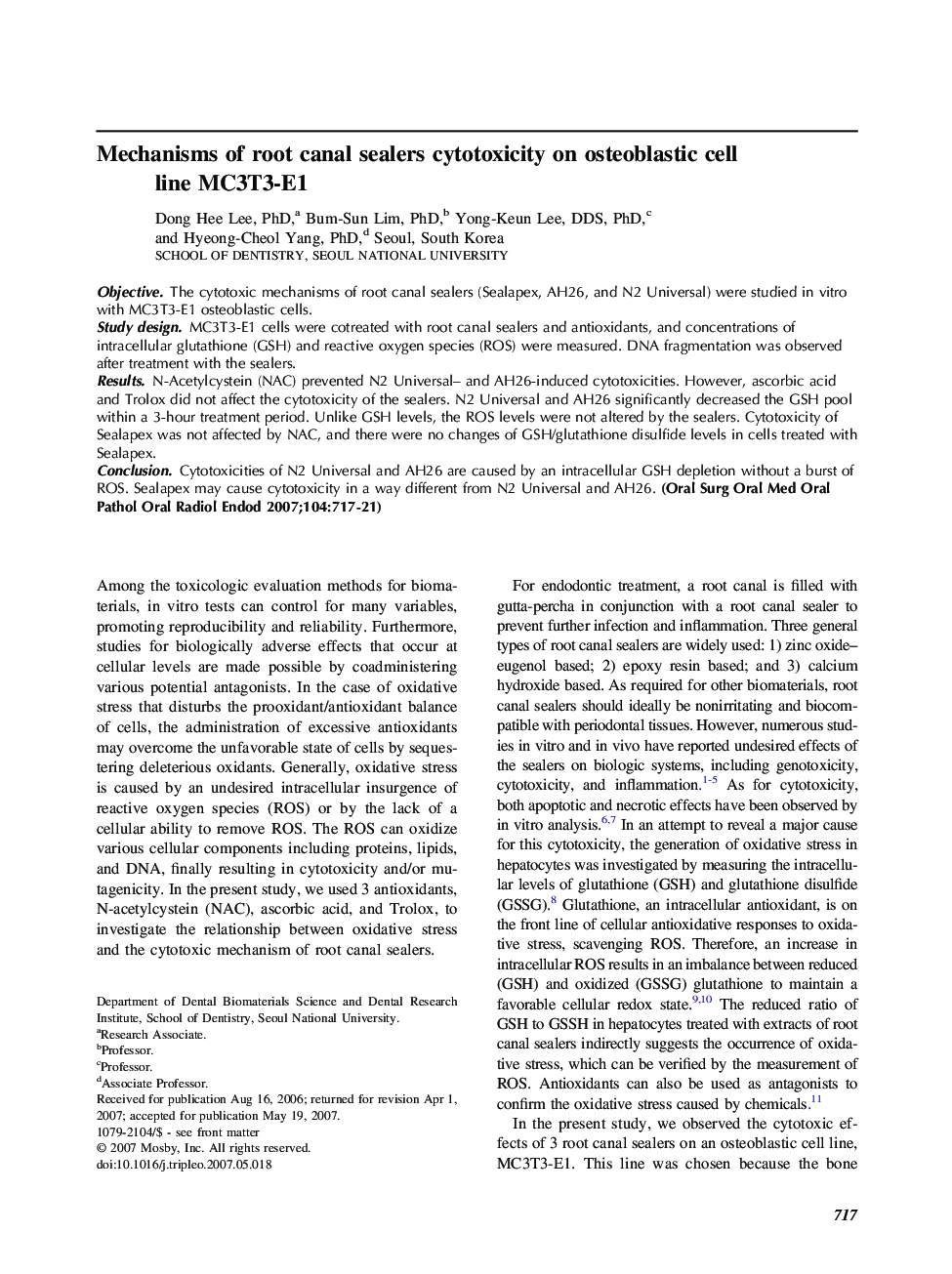| Article ID | Journal | Published Year | Pages | File Type |
|---|---|---|---|---|
| 3169224 | Oral Surgery, Oral Medicine, Oral Pathology, Oral Radiology, and Endodontology | 2007 | 5 Pages |
ObjectiveThe cytotoxic mechanisms of root canal sealers (Sealapex, AH26, and N2 Universal) were studied in vitro with MC3T3-E1 osteoblastic cells.Study designMC3T3-E1 cells were cotreated with root canal sealers and antioxidants, and concentrations of intracellular glutathione (GSH) and reactive oxygen species (ROS) were measured. DNA fragmentation was observed after treatment with the sealers.ResultsN-Acetylcystein (NAC) prevented N2 Universal– and AH26-induced cytotoxicities. However, ascorbic acid and Trolox did not affect the cytotoxicity of the sealers. N2 Universal and AH26 significantly decreased the GSH pool within a 3-hour treatment period. Unlike GSH levels, the ROS levels were not altered by the sealers. Cytotoxicity of Sealapex was not affected by NAC, and there were no changes of GSH/glutathione disulfide levels in cells treated with Sealapex.ConclusionCytotoxicities of N2 Universal and AH26 are caused by an intracellular GSH depletion without a burst of ROS. Sealapex may cause cytotoxicity in a way different from N2 Universal and AH26.
